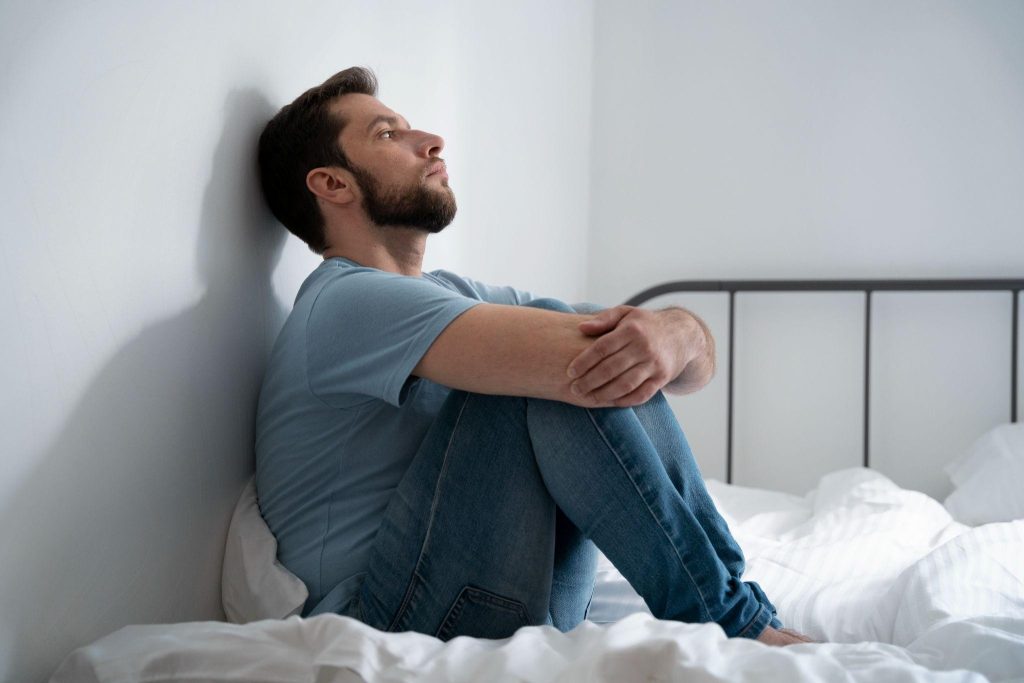COMMON SYMPTOMS OF DEPRESSION

ESSENTIAL FACTS:
- Depression is a serious mental illness that affects millions of people worldwide.
- Untreated depression for long periods can lead to suicidal thoughts or suicide attempts.
- Depression results from a combination of factors and needs proper treatment by a mental health professional.
- It is important to note that some patients maintain a smiling exterior despite deep feelings of depression.
- In children and adolescents, a depressed mood can present itself as an irritability and isolation.
- Diseases like hypothyroidism, HIV infection, B12 deficiency, anemia and seizures are linked with the development of depression.
- Literature confirms that depression is not a normal part of aging as it’s more common in midlife than in late life.
WHAT IS DEPRESSION?
Depression is classically a mood disorder because one of the main features is a persistently low mood. Depression results from a combination of factors like genetics, environment etc.
Decreased functioning of neurotransmitters (chemical molecules in the brain) has been linked with episodes of depression, hence correction for these deficits through antidepressants works as a successful treatment modality.
WHAT ARE THE COMMON SYMPTOMS OF DEPRESSION?
As we all know, it’s a normal experience to feel unhappy during adversity. Only when the feelings of unhappiness are present in the absence of adversity, accompanied by other unusual symptoms, does the diagnosis of a depressive disorder come into play. The study explains how to diagnose depression using the DSM-5 criteria. To qualify for a diagnosis, symptoms must be present for at least two weeks and indicate a change from the person's usual functioning. Additionally, at least one of the symptoms must be either a depressed mood or a loss of interest or pleasure in daily activities.
1. Continuous low mood:
This is the most significant symptom of depression. Not having a clear cause of low mood throughout the day and not being able to snap out of the low mood despite being in an environment which is happy and energetic is a classical feature. The mood is often worse first thing in the morning when the patient wakes, improving as the day wears on.
2. Loss of pleasure & energy :
No enthusiasm for activities and hobbies that were once enjoyable. A depressed person feels no zest for living and no pleasure in everyday things. It isolates the individual from family and friends and causes further damage. Individuals suffering from depression feel drained, and not willing to engage in any activity. The feeling of being slowed down lingers throughout the day and does not go away with rest.
3. Worthlessness or guilt:
People think that they are failing in what they do and others see them as failure, they no longer feel confident and discount any success as a chance happening for which they can take no credit.
4. Weight changes:
A sudden unexplained increase or decrease in weight could point towards a depressive disorder. (e.g., a change of >5% of body weight in a month). There are often symptoms of an eating disorder, such as disregard for eating meals or too much eating, known as emotional eating.
5. Sleep disturbances:
It can show up as struggling to sleep despite being tired or sleeping way too much each day. This leads to a lack of energy and further deteriorates daily activities.
6. Decreased ability to focus:
It becomes difficult to perform tasks with less concentration especially when there is uncertainty in making important decisions. This symptom is often noticed by people at home or the workplace. It can lead to feelings of incompetence, anger and frustration.
7. Recurrent thoughts of death:
It poses a threat to the well-being of a depressed individual. As one starts to think that life is not worth living, the thoughts of taking one's life become constant. Some people may plan and commit suicide to end their miserable thoughts.
A WORD FROM MENTAL NURTURING:
Have you noticed a change in your mood and energy? If you are constantly low on energy, you might ask yourself, 'Am I sad or depressed?'
As there are many misconceptions about the diagnosis of depression, we would want our readers to go through this article to find out what depression looks like in everyday life. Depression can be treated with knowledge and support, as there are ways to deal with depression and to help someone with suicidal thoughts. Screening for depression and suicidal thoughts should be conducted carefully among people with chronic diseases, isolated adolescents, and older adults displaying symptoms of sadness. The first-line treatment for mild depression involves behavioral therapy and monitoring of symptoms. Antidepressant medications have demonstrated a favorable benefit-risk profile for moderate-to-severe depression. Treatment choice depends on associated side effects, coexisting conditions, specific symptoms, and the patient's response history. It is essential to break the stigma surrounding mental illness and encourage people to open up about their mental health. Only by becoming self-aware, one can deal with the symptoms with resilience and emotional intelligence.
RESOURCES:
1. Park LT, Zarate CA Jr. Depression in the Primary Care Setting. N Engl J Med. 2019 Feb 7;380(6):559-568. doi: 10.1056/NEJMcp1712493. PMID: 30726688; PMCID: PMC6727965.
2. Wartberg L, Kriston L, Thomasius R. Depressive Symptoms in Adolescents. Dtsch Arztebl Int. 2018 Aug 20;115(33-34):549-555. doi: 10.3238/arztebl.2018.0549. PMID: 30189974; PMCID: PMC6156549.
3.https://www.google.ae/books/edition/Shorter_Oxford_Textbook_of_Psychiatry/Y1DtSGqLnoChl=en&gbpv=1&dq=Shorter+Oxford+Textbook+of+Psychiatry+7th+edition&printsec=frontcover
4. https://www.who.int/news-room/fact-sheets/detail/depression
5. Fiske A, Wetherell JL, Gatz M. Depression in older adults. Annu Rev Clin Psychol. 2009;5:363-89. doi: 10.1146/annurev.clinpsy.032408.153621. PMID: 19327033; PMCID: PMC2852580.

Written by:
Dr.Saba Munir, MBBS
On October 28, 2024

